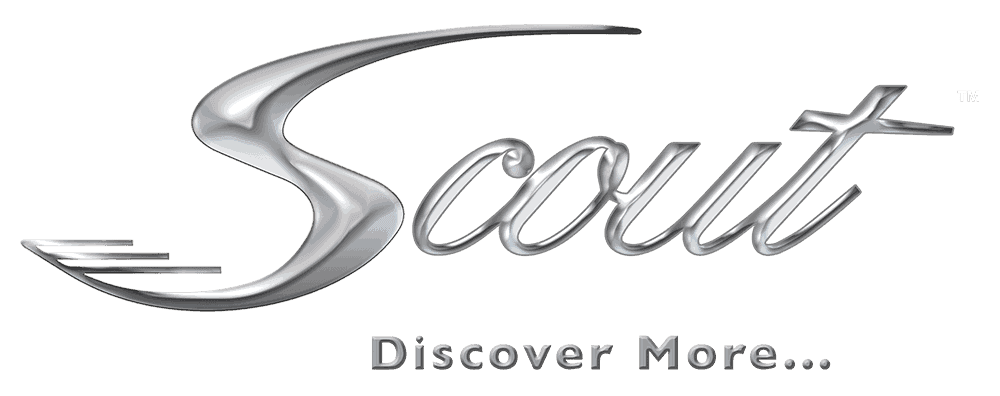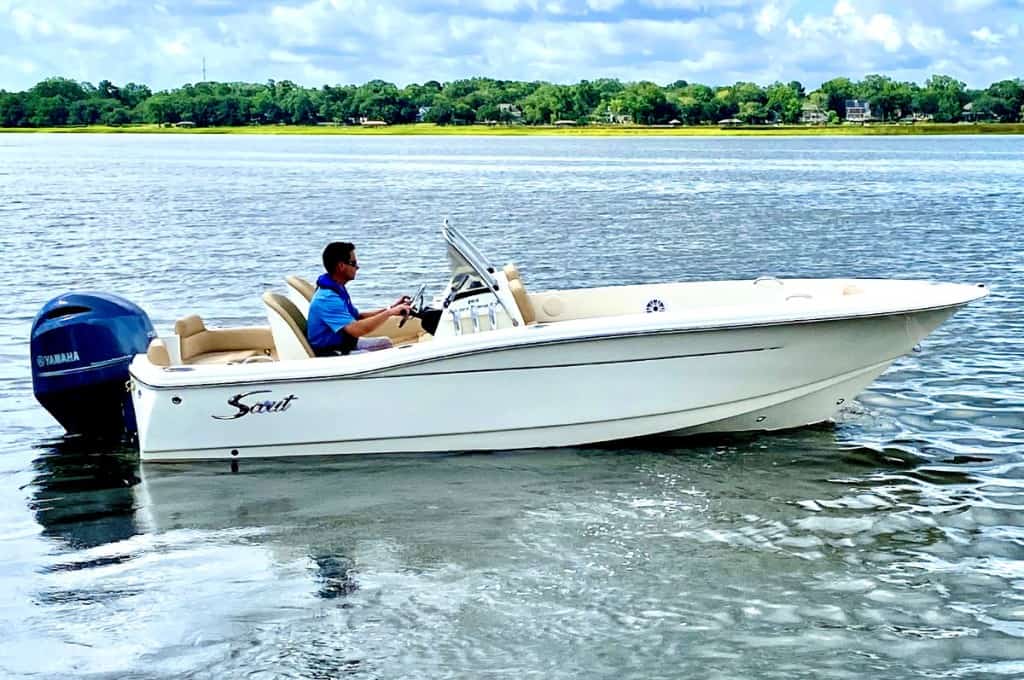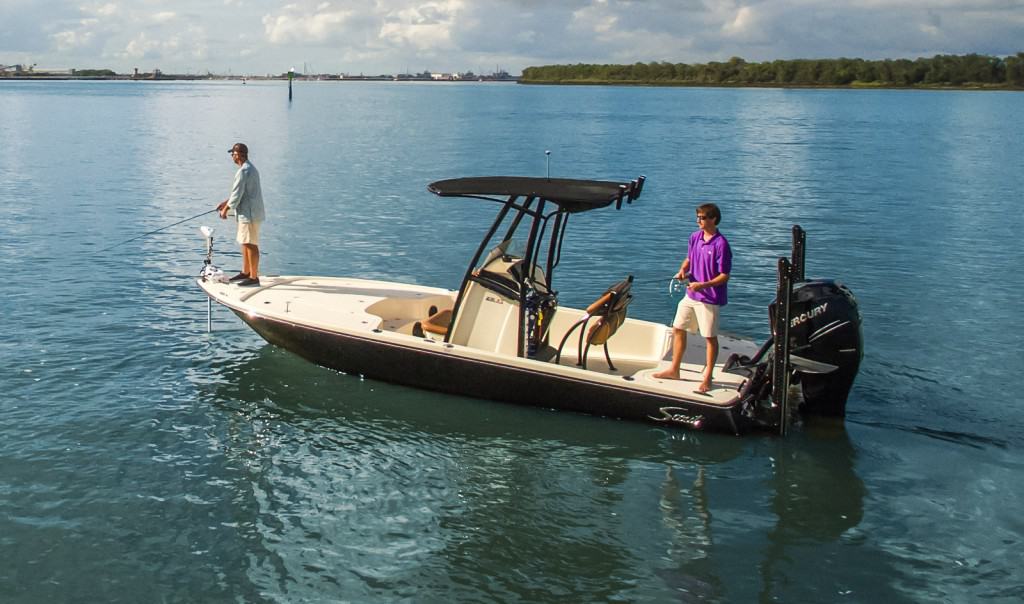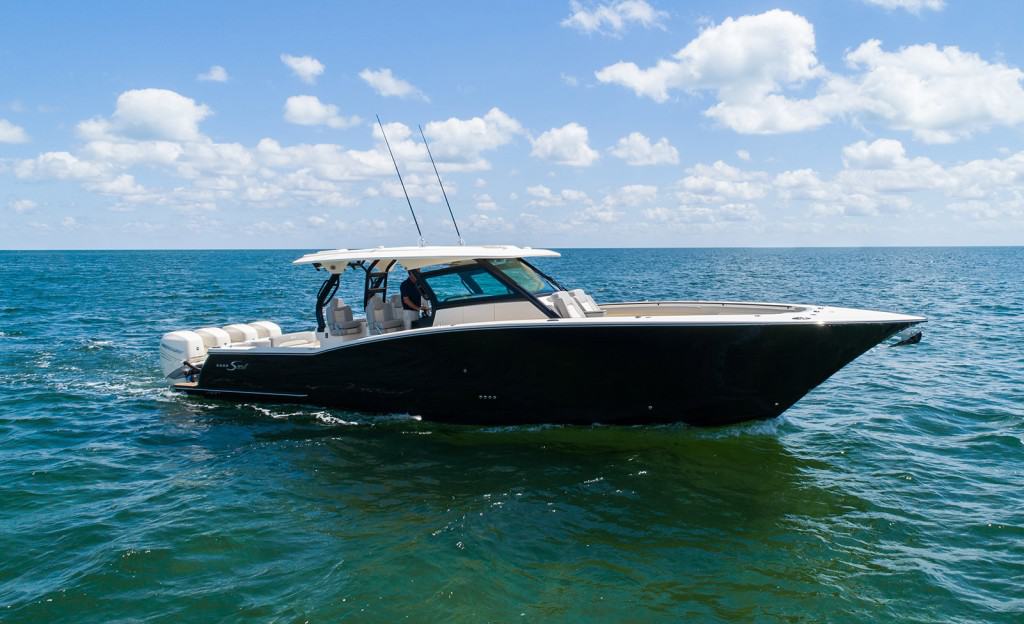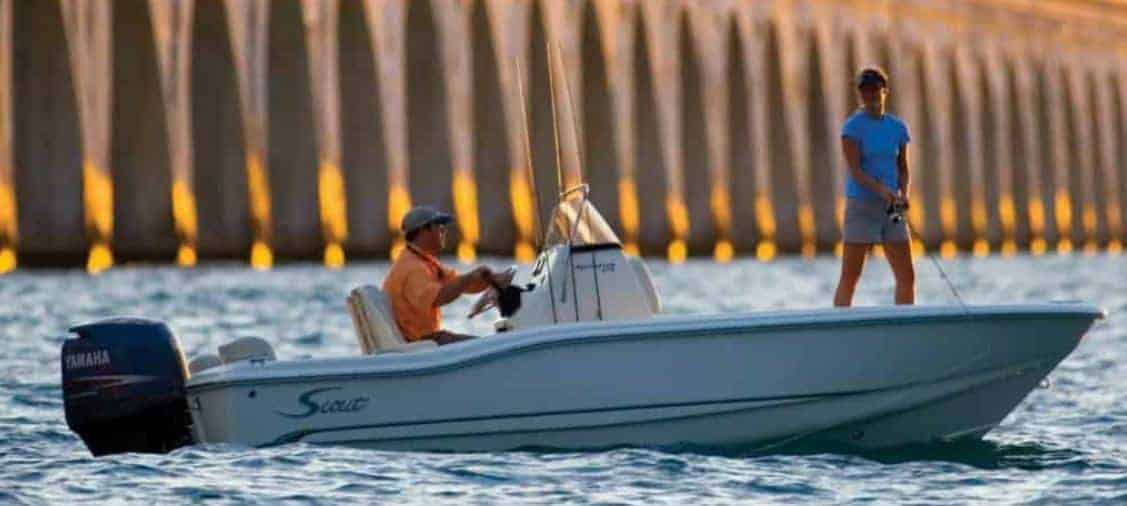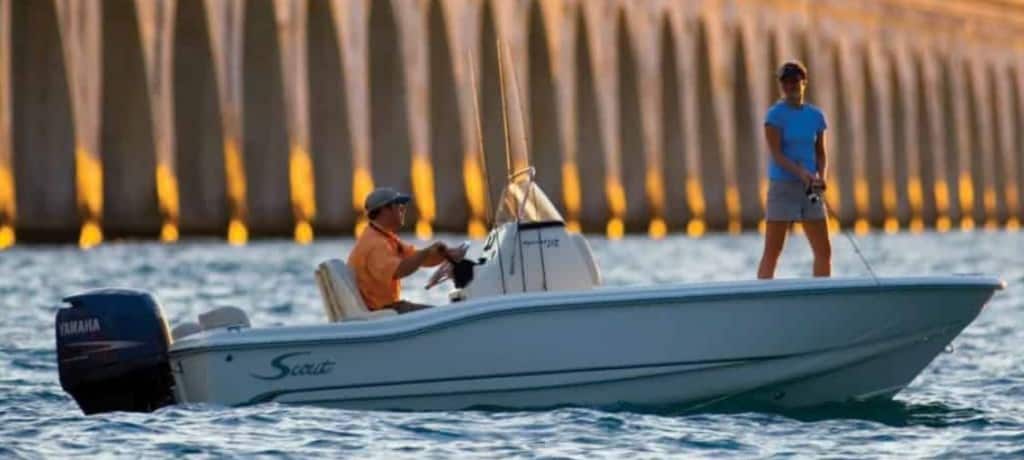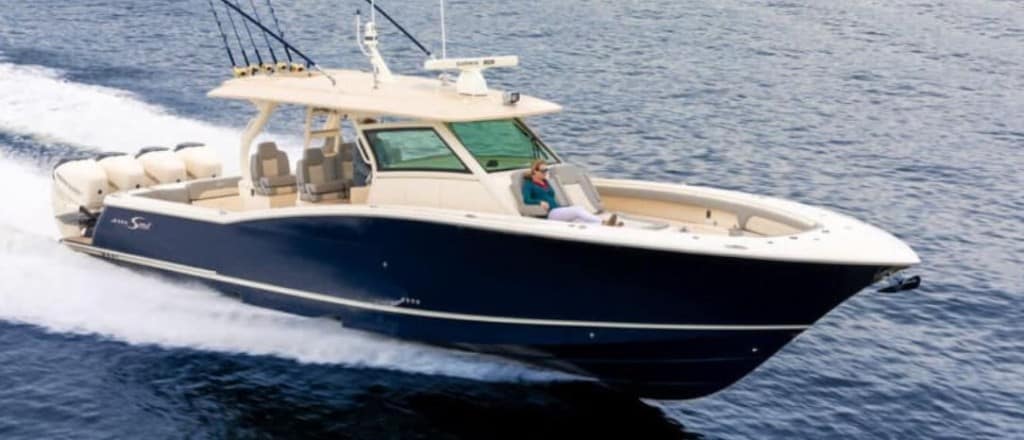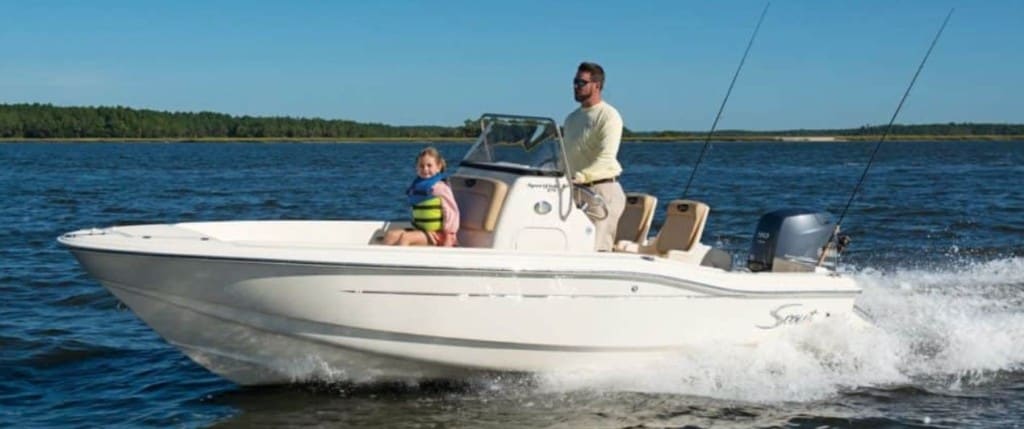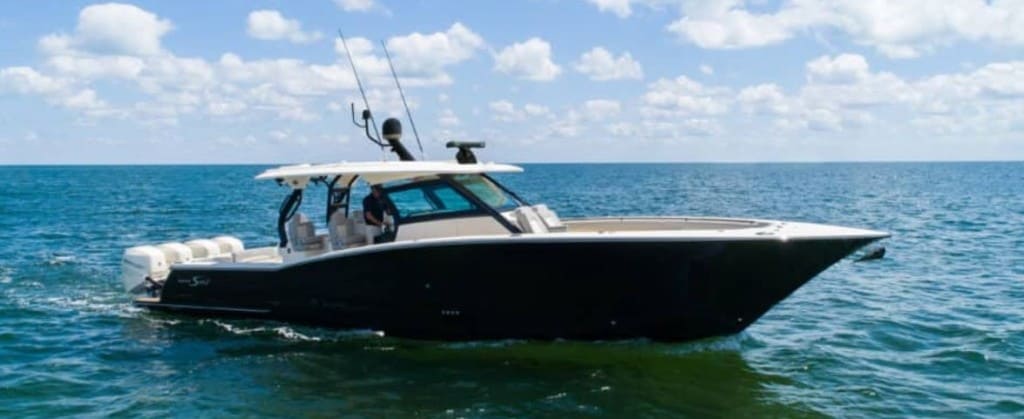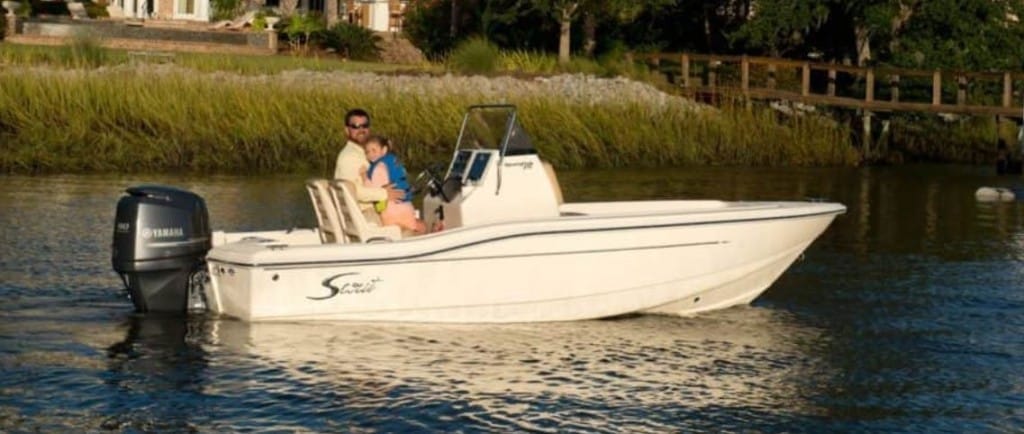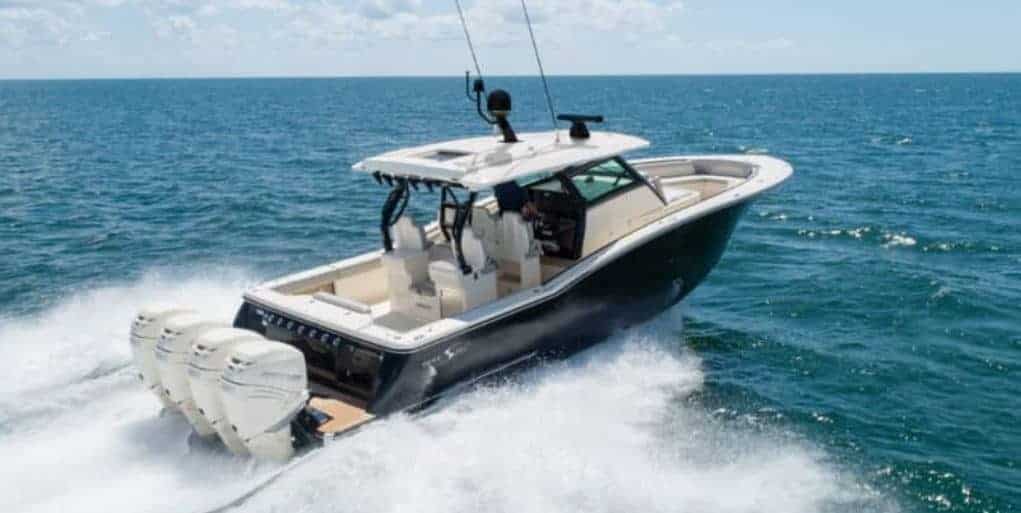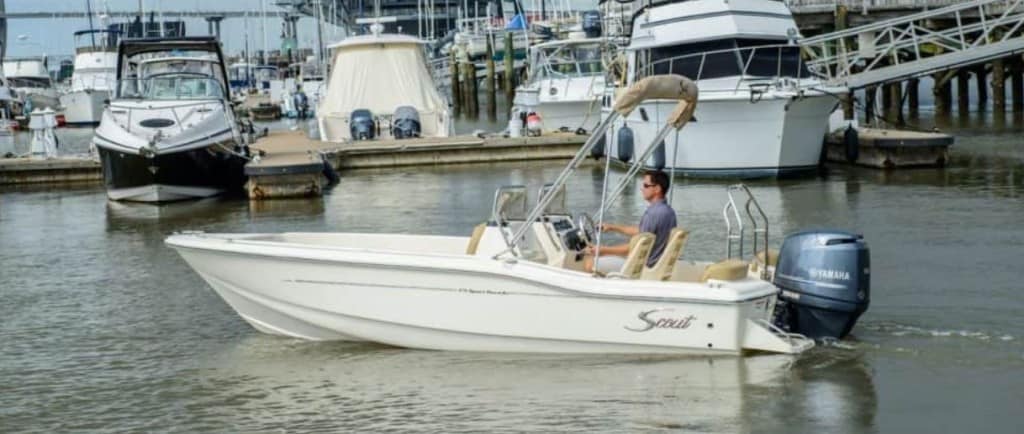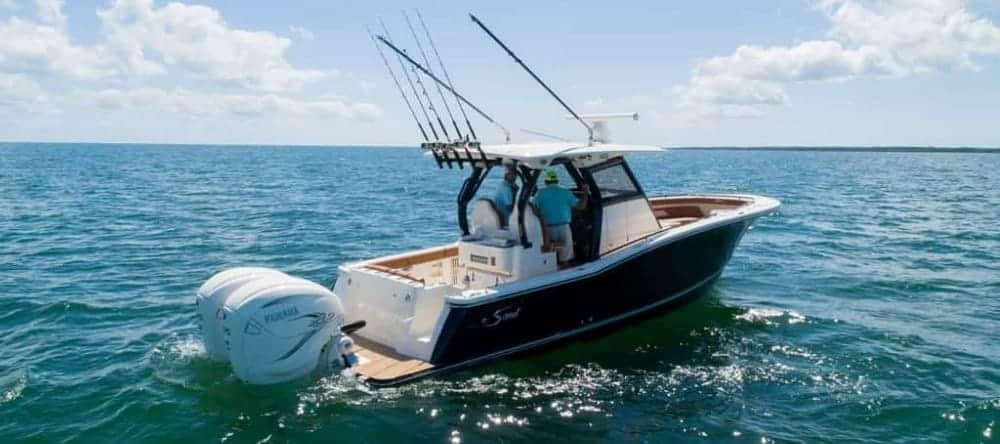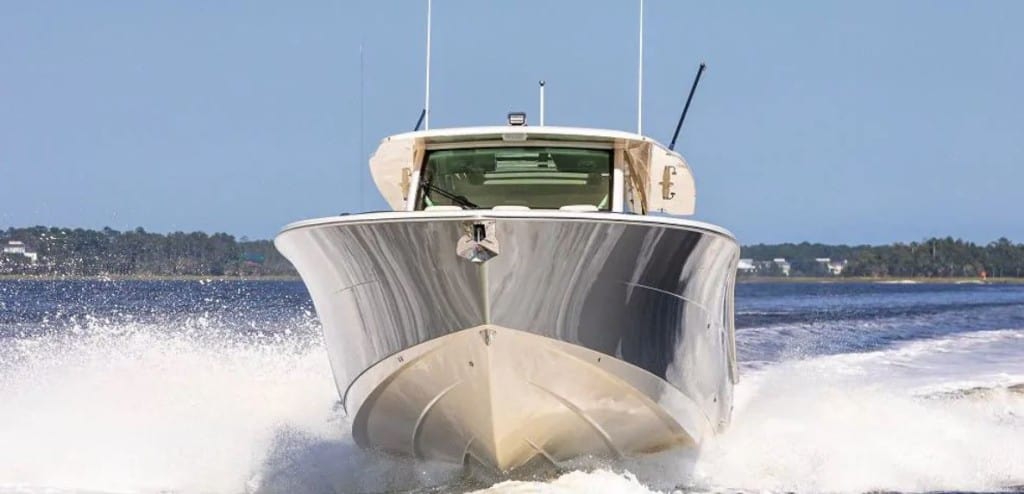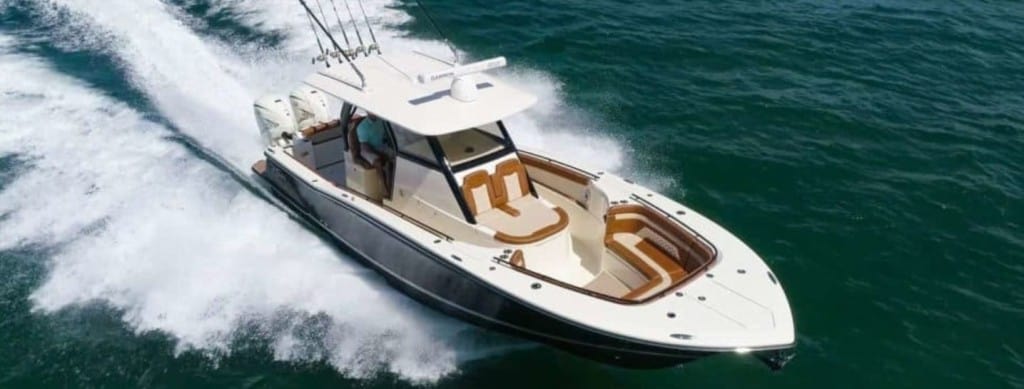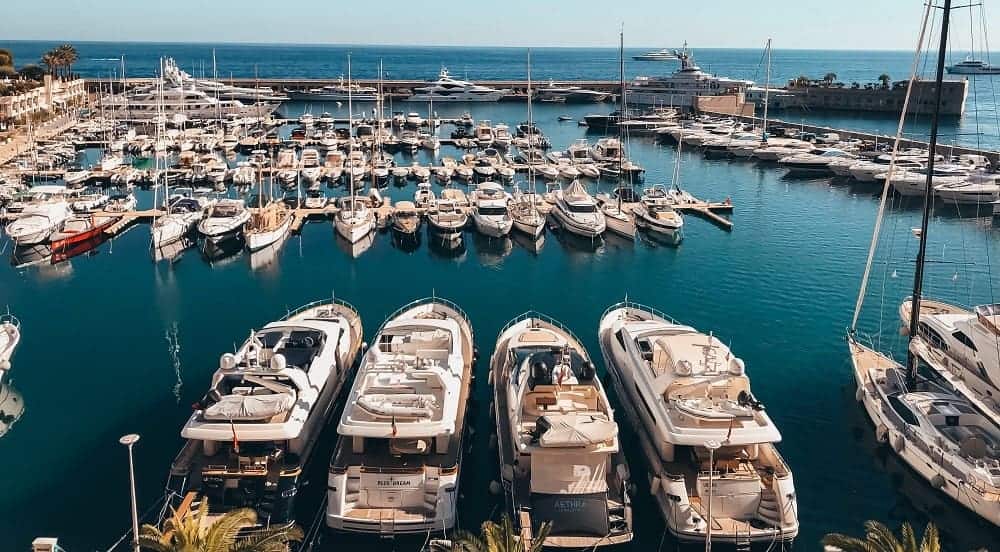
Whether it’s the warm boating season or the cold winter months, boaters need to consider storage. Finding the right place to store your boat can have a large impact on your overall enjoyment of the craft, so it’s important to carefully review your options. In general, you’ll find that boat storage falls into three broad categories—outdoor storage in the water, outdoor storage out of the water, and indoor storage. Read on to learn where and how to store your boat.
If you’d like to purchase a new craft, design one to fit your exact needs with our Build Your Scout tool. You can add features for fishing, sporting, entertainment, and more to best enjoy your boating experience!
Wet Outdoor Storage
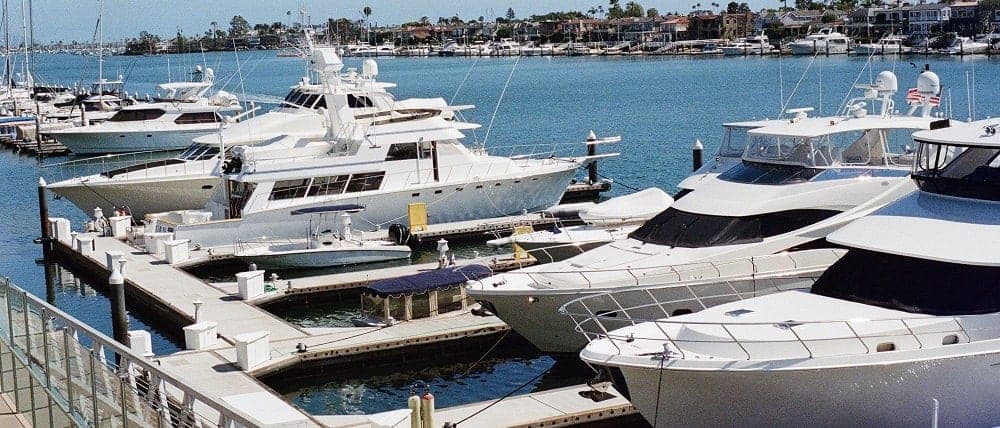
Although it may be surprising, some people do actually store their boat in the water all year long. This is usually an acceptable practice in any region where there is no hard freeze. Even if there is a light freeze, it can still be acceptable for your boat.
Many marinas offer “wet slips,” which are typically the most affordable option. With this method, your boat stays in the water all year, although lift slips are likely also available. This provides you with the additional option of lifting the boat off the water, which helps maintain the quality of the hull.
The top advantage of wet storage is that you have access to the boat whenever you want it, and you won’t have to wait for storage-facility staff to give you access to the craft. You also don’t have to trailer the boat every time you want to go on the water—unless, of course, you want to boat on a different body of water.
Dry Outdoor Storage
When it comes to storing a boat, dry outdoor storage is a more popular option, but it’s also more expensive. With this type of storage, your boat is kept in an uncovered space in a dry location. It will require a canvas cover of some type to protect the interior.
Dry outdoor storage is available almost any area where boats are found, so you can likely find a facility in your region. In fact, many marinas actually have on-site dry outdoor storage.
Indoor Storage
Indoor storage is the most expensive option, but it also provides the most protection for your craft. However, it can sometimes be difficult to find. Indoor boat storage facilities come in a variety of types and sizes, and many have giant racks—often called “boatels”—that can be used to store your vessel.
Of course, if you have your own garage, you could have your own indoor storage space. But this may also mean sacrificing a place for one of your vehicles.
Purchase a World-Class Boat from Scout
We hope you have a better idea of where and how to store your boat. If you’re looking to purchase a brand new craft, get started designing it with our Build Your Scout tool. From large offshore fishing boats to small skiffs for intertidal fishing, our world-craft vessels are sure to meet your needs.
